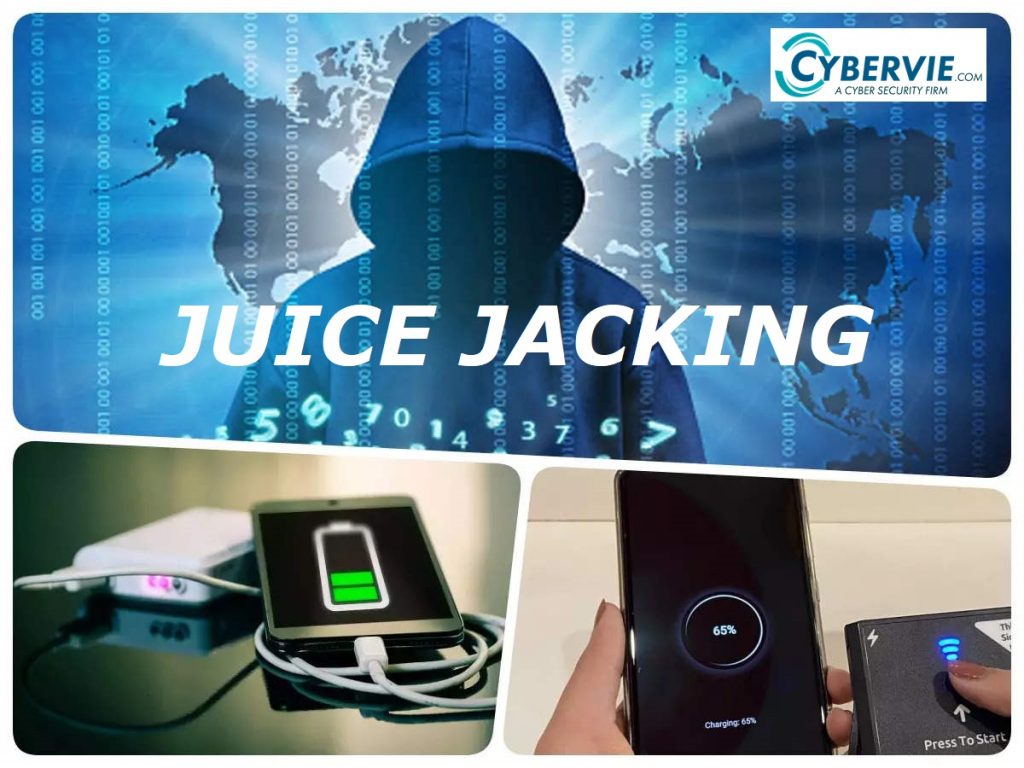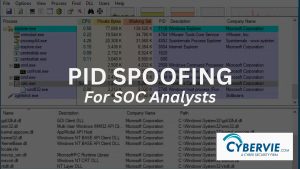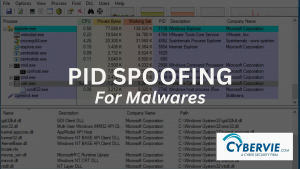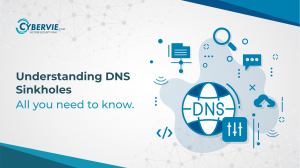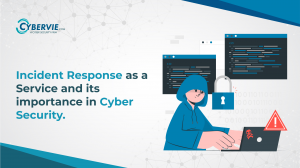What is Juice Jacking?
Juice jacking is a type of cyber attack where you unknowingly plug in your mobile or electronic device into a USB port that is infected with malware which then gets loaded on the phone once a connection is made. This malware can violate your privacy by gaining direct access to your confidential data, passwords, banking information, and so on.
These unidentified USB cables can also be used to directly copy sensitive information from your device, and, can be a huge threat to your personal and financial security. Cybercriminals using this technique are waiting to get their hands on your data – from PIN numbers to passwords – and misuse it to their advantage.
While the risk of juice jacking is low as compared to other cyber crimes, it can still be quite damaging to your privacy. The devices that are most commonly used to carry out this cyber attack are charging cables and USB ports. And while not all public charging stations are unsafe, these tips can help keep your data protected from such cyber crimes to a large extent.
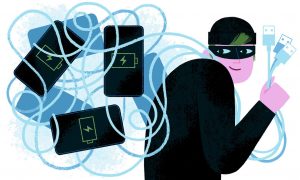
How Juice Jacking works?
When you connect your phone to your computer via USB, it typically gets mounted as an external drive, and you can access and copy files to and from your phone. That’s because, as mentioned above, your typical USB port isn’t simply a power socket but a data channel as well.
A typical USB port comprises five pins, only one of which is used for charging. Two other ones are used for data transfer, and the remaining two are used as an attached device presence indicator and the ground, respectively.
Usually, the phone’s operating system disables the data transfer capabilities as soon as the phone is plugged in. You may have seen a prompt on your phone asking you to “trust” the computer you’re connected to. Trusting the host computer enables data transfers. If you choose not to trust the host machine or ignore the prompt, data transfers will not be possible – unless you connect your phone to an infected public charging station.
Infected USB ports can silently enable data transfer modes on your phone once connected. You won’t be prompted and won’t have any indication that this is happening. Once you unplug your phone, you may have had your personal information stolen, and your phone may well be infected with a virus or malware – lucky you.
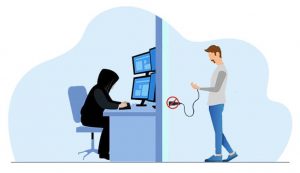
Types of Juice Jacking
1. Data theft juice jacking attack
We touched upon this payload above. One of the common goals of juice jacking attacks is to exfiltrate unsuspecting users’ personal information. The actual stealing of the data will typically be fully automated and will happen very quickly. And given how intimate we are with our phones today, this could lead to compromised credit cards, bank accounts, email, health records, etc. It’s just not worth a quick charge.
2. Malware/virus infection juice jacking attack
Once the attacker restores data transfer capabilities, it can flow both ways. That means that they will be able to upload malware or a virus onto your phone. Once infected, your phone will be susceptible to all of the harms associated with malware/virus infections: data loss, loss of functionality, random network connections, device slowdown, installation of other malware, etc.
3. Multi-device juice jacking attack
A multi-device juice jacking attack is essentially the same as the malware/virus infection attack in that the attacker infects your device with malware. The difference is simply that the malware that was loaded onto your phone is designed to infect the other USB charging ports on the charging station. That scales up the attack and enables the attacker to compromise multiple devices simultaneously, growing their payload.
4. Disabling juice jacking attack
In a disabling juice jacking attack, the mobile phone is, well… disabled. Once connected to the infected charging port, the attacker will load malware onto the phone, effectively disabling it for the legitimate user while retaining full control over the device for themselves. The same harms as above follow a disabling juice jacking attack, with the added bonus of potentially being used as part of a DDoS attack.
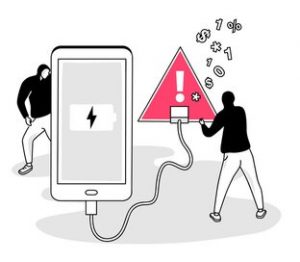
How to Stay Safe?
1. Avoid using free/unidentified charging cables
Connecting your electronic device to a public charging station might seem like the most convenient thing to do in a ‘low-battery’ situation. However, considering there is no practical method to check if a cable is infected with malware or has been planted by a cyber criminal, it is best to not use them and carry your own charger or portable power bank instead.
2. Get a USB data blocker
These are protective devices that are fixed between your charging cable and port to prevent any type of data transfer once your device is connected. This means that your device can be charged but the cable will be unable to send or receive any data, making sure that your privacy remains protected.
3. Use power-only USB cables
These are specialized cables that are different from traditional USB cables in a way that it only allows charge to flow from the charging point to your device. It does not allow any kind of data to be transferred, making it a relatively safer option as compared to USB cables.
So avoid connecting your electronic devices to unknown charging stations and keep your data safe and protected from juice jacking!


